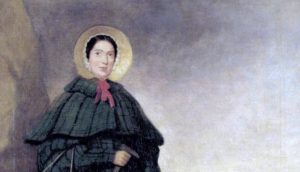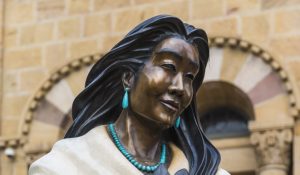Suzanne Valadon (1865-1938) was a successful, self-trained artist of Montmartre in Paris. She began her career modelling for such artists as Toulouse-Lautrec and Renoir, and was close friends with Degas and the composer Erik Satie (who proposed to her immediately — but she turned him down). Watching how the artists painted her, she taught herself how to paint and rose from the background of a poor, uneducated street child to become one of the most notable artists of the period.

The daughter of an unmarried laundress, Suzanne grew up working a variety of jobs to support herself and her family: waitress, nanny, funeral wreath maker, vegetable seller, etc. She even performed in the circus for a year until a fall from a trapeze at age 16 ended her career.
Suzanne began working as a model for several important artists. Unable to afford formal lessons, she carefully watched as they painted her and began creating her own paintings using the artists’ techniques. Degas (who she didn’t model for, but he was a close friend and mentor) and Toulouse-Lautrec encouraged her in her art and gave her some lessons. Degas was impressed with her work and bought several of her pieces.
See Also: Rose-Adélaïde Ducreux, French painter, composer, and musician
In 1894 Valadon became the first woman to show at the Société Nationale des Beaux-Arts, a major French artistic accomplishment. She held her first exhibitions in the 1890s, and by 1909 she was able to fully support herself and her family with her artwork. Her first one-person show in 1911 was a huge success and garnered her many new patrons.
Suzanne Valadon, though she was well aware of current avant-garde artistic trends from her social circles at Montmartre, didn’t commit to any particular style of movement but chose an independent path based on a several different styles. She painted still lifes, portraits, flowers, and landscapes (noted for their strong composition and bright, vibrant colors) but her most famous subjects are her female nudes.

While the Symbolist avant-garde avoided any reference to class in their work, Suzanne painted her nudes as members of the working-class, recognizable to Victorians by their unidealized bodies, heavy features, relaxed postures, and ease displayed toward their nudity. Many critics interpreted the lack of idealization in Valadon’s nudes as ugliness and lack of charm and accused Valadon of hating women, as well as stereotyping her for her own background in the working class and her “un-feminine” bravado and feistiness. The coarse form, bright color, and loose brushstrokes of her artwork were considered a very “masculine” style and critics of the time just didn’t know how to categorize her.
Suzanne Valadon, though a prolific and successful contemporary of such famous artists of Renoir and Degas, is often dismissed in art history books and biographies as a mere model or defined as the mother of the her artist son, Maurice Urillo.
Her art is often not even mentioned in art history books.
Suzanne’s most famous paintings are Summer, After the Bath, and Adam and Eve. (Some of her work is visible on the National Museum of Women in the Arts website.) Adam and Eve was modeled on Valadon herself and her young lover Andre Utter, and was the first piece by a female artist to show a nude man and woman together. All in all, her work totals over 475 paintings, nearly 275 drawings, and 31 etchings (these do not include the many works lost or destroyed over the years).
Gallery

Image Credits
- Photo of Suzanne Valadon (1865-1938), painter and model from Wikimedia Commons
- Self-Portrait 1883 from Wikipedia Commons
- Portrait of Erik Satie 1893 via Wikimedia Commons
- The Blue Room (La chambre bleue) 1923 via Wikimedia Commons
Recommended Reading
Keri is a blogger and digital marketing professional who founded Amazing Women In History in 2011.






Suzanne Valadon corrigée / Suzanne Valadon corregida
http://www.youtube.com/watch?v=4zih-lkOjxA
Hard to believe that an artist this prolific is dismissed in art history. Although, I guess I shouldn’t be surprised at yet another woman denied her due. Great post.
I would like to know more. Love Suzanne Valadon’s work.